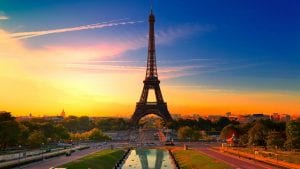The world is your oyster. The phrase, perhaps more resonant with ambitious parents sprinkling verbal stardust onto their wide-eyed learning children, can just as fittingly illustrate the state of convenience that travelling to far-flung countries has become. Google, no longer the infant search engine it was a decade ago, has revolutionised into an amorphous directory of the world. Lost in the hustle and bustle of downtown New York? You would just as easily find your way on Maps as if you were in the middle of a hike amongst the Bamboo Forest of Japan’s Kyoto. Those with higher end mobile phone specifications (meaning your operating system has at least 1 or 2 GB of RAM spare) and a relatively recent update of Maps should look at their ‘Timeline’ – you may be in for a fascinating shock. Under the hood of a seemingly simple satellite map which can tell you how to walk, drive or transit to any destination is an incredibly concise tracking mechanism which records to-minute precision what places you’ve been, how long you were there for, and whether you were walking or driving there – traceable to any particular day. Placing aside the argument for the potential downside of such impeccably categorised and stored data, the focus is on the complete ease with which companies such as Google have enabled a person to travel, or tour.
The advent of aggregating websites, emerging to clean up the clusters of individual ‘bargain-offering’ or company websites selling products, has amongst other industries, become a game-changer for the travel one. Simply put, websites such as Skyscanner and Momondo scan through thousands of individual air-fare offering websites to aggregate optimal tickets in the categories of cheapest-highest, shortest-longest, least-most stopovers (it goes on) in a way that booking next summer’s holiday could be as quick as five minutes. No wonder Flight Centre faced some turbulence in 2016. Much of the function of retail branches, where consultants book tickets for you, have been made redundant – given your level of computer-operating skill is average or above. It’s mostly for those who feel more comfortable having a ‘professional’ handle their airfares that visit retail branches, but they should be aware that the ‘cheap’ packages promoted over the counter can just as easily be pounced on if they just had small bit of confidence in a do-it-yourself booking online!
Being a tourist in a foreign country can be an exhilarating feeling. Away from the monotony of routine and oppressive demand of making-a-living, it’s a time when curiosity blossoms and manifests in integrative and investigative journeys amongst the flora and fauna of South America’s Amazonian rainforest, China’s sloping Great Wall or America’s infinite Grand Canyon. Whether it be in a campervan hire, bustling ‘tuk tuk’ or cramped bus, it is these moments when existence comes into deep introspection. Hiking to the top of a mountain – whether it be on the 900 metre peak of Rokko in Kobe, Japan or 3000 metre peak of Fansipan in Sapa, Vietnam – blasts you with a complete exoneration where niggling anxieties or pestering concerns about job promotion, rent affordance, credit card interest et cetera can be forgotten; at least temporarily. It’s easy to forget the purpose of making a living until you realise what living actually entails. If standing on the edge of a 6000 metre snow spattered peak surveying the conquered regions of millennium-aged forest feeling-but-exulting in the dull ache of a week-long ardour isn’t an experience ‘to die’ for, then there must be a strangely more exhilarating way ‘to die’ for.
But disappointingly, the facility with which companies such as TripAdvisor allow you to book and discover ‘undiscovered gems’ of localities has worked inversely to develop tourists, instead of travellers. It is easier, and arguably more scenic to take a cable car up a mountain instead of hiking. It is definitely more appetising for your megapixel-laden smartphone camera to capture cable-car enabled ‘panoramic’ shots. It is definitely more attractive to post delicately curated photos of café ‘foodie’ shots on your Instagram with a wonderfully adept tag of ‘wanderlust’. But should the attractive outweigh the gritty satisfaction of lugging a 1.5 metre rucksack over kilometres on end and taking momentary breaks at village homestays serving piping hot home-cooked soups? Should the adoration of Instagram follower ‘likes’ outweigh the exhilaration of the ‘experience-perfect’ moment in substitution of the ‘picture-perfect’ moment? A point of differentiation between a traveller and a tourist is probably how much is cared about capturing the picture of the experience rather than being in the experience.
That isn’t to say that your latest DSLR purchase is a pointless investment. Used as a travelling illustrator, it is a wonderfully poignant way of capturing the emotion and vivacity of any moment. YouTubers such as Sam Kolder enthral audiences worldwide with edited productions romanticising travel and the magical stories it inspires. Vloggers such as Mark Weins capture food in still and motion production methods which highlight the authenticity of each cuisine. These creators use cameras to capture authenticity, curiosity and wonder.
The next time you open VSCO and exhaustively select the right filter for your follower-oriented photo, you may wonder whether you are touring ‘for the Instagram’ or travelling for your own experience.
If you would like to contribute an article or contact our contributors, you can get in touch here

